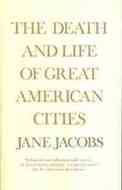

Moreover, self-appointed public characters such as storekeepers enhance the social structure of sidewalk life by learning the news at retail and spreading it.

As the main contact venue, pavements contribute to building trust among neighbors over time. To make this eye protection effective at enhancing safety, there should be “an unconscious assumption of general street support” when necessary, or an element of “trust”. Street safety is promoted by pavements clearly marking a public/private separation, and by spontaneous protection with the eyes of both pedestrians and those watching the continual flow of pedestrians from buildings. She explores the three primary uses of sidewalks: safety, contact, and assimilating children. Jacobs argues that all these are irrelevant to how cities work, and therefore moves on to explain workings of cities in the first part of the book. Later Le Corbusier devised the Radiant City, composed of skyscrapers within a park.

Concurrently, City Beautiful was developed to sort out the monuments from the rest of the city, and assemble them in a unit. Jacobs briefly explains influential ideas in orthodox planning, starting from Howard’s Garden city, indeed a set of self-sufficient small towns, ideal for all but those with a plan for their own lives. Looking into how cities actually work, rather than how they should work according to urban designers and planners, Jacobs effectively describes the real factors affecting cities, and recommends strategies to enhance actual city performance. Jacobs' book is an attack on “orthodox” modern city planning and city architectural design.

"Infobox Book" name The Death and Life of Great American Cities image image caption Cover of The Death and Life of Great American Cities author Jane Jacobs country America language English genre Non-fiction publisher Random House release date 1961 media type Hardback pages 472 isbn 0375508732


 0 kommentar(er)
0 kommentar(er)
